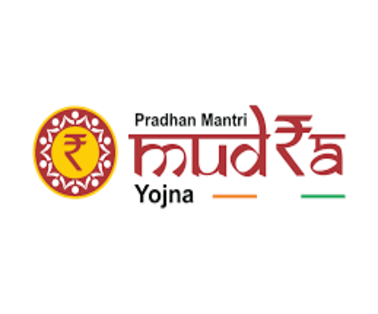The National Education Policy (NEP), launched in 2020, represents a landmark reform in India’s education sector. However, its implementation has faced significant challenges and criticism, highlighting multiple areas where the policy’s goals are yet to be fully realized.
Issues in the Implementation of the National Education Polic
Reduction in Syllabus Content: The first problem is the NEP’s structure itself. As a result of the credit-based system syllabi in all disciplines have been stunted. There is a poem by Walt Whitman named ‘Passage to India’. It has 255 lines across 13 sections. Earlier; under the NEP syllabus, just 68 lines across 4 sections have been prescribed.
Dilution: The bigger problem is one of dilution. Some institutions, like St Xavier’s University, Kolkata, focus on one major core subject per semester in programs like Economics Honours. By diluting the core content and breadth of the subject chosen for study by an honours student, NEP is causing the lowering of standards in domain-centric knowledge dispensation and absorption.
Examination: Students are required to take seven to eight exams per semester. Add to that the internal assessment burden for each of these subjects, with one assignment and one class test per subject, not to mention continuous assessment. This, combined with marks for attendance separately and for continuous assessment classes attended, creates a huge bureaucratic load.
Amendment: Earlier, under NEP, practicals were prescribed for even non-core Arts subjects, to be held on designated days with external experts on board, the University of Delhi at least has seen the impracticality of such practicalexaminations and removed them via a recent notification. Such constant amendments to rules leads to stress and confusion
Funding Constraints: Challenges in fully implementing NEP proposals due to limited resources, necessitating increased scholarships and private sector involvement without clear strategies outlined in the policy.
Pedagogical Change: Implementation challenges in introducing multi-language learning, foundational skills development, and value-based education, requiring thorough reexamination and adaptation of teaching methods.
Funding and Pay Scale: Challenges in meeting the demand for qualified teachers and improving their pay scale to facilitate conceptual and experimental teaching methods. Addressing personal and professional barriers faced by teachers, especially in remote and inaccessible areas, to ensure the successful implementation of NEP.
Overview of the National Education Policy
- The National Education Policy (NEP) was launched in 2020
- It is the first education policy of the 21st century and replaces the thirty-four-year-old National Policy on Education (NPE), 1986.
- Built on the foundational five pillars of Access, Equity, Quality, Affordability, and Accountability
- This policy is aligned with the 2030 Agenda for Sustainable Development
Aims of the National Education Policy
- The NEP 2020 aims to bring 2 crore children, who are out of school, back into the main stream through open schooling system
- The Policy aims to transform India into a vibrant knowledge society.
- The Policy focuses on making India global knowledge superpower by making both school and college education more holistic, flexible, multidisciplinary, suited to 21st century needs.
- Lastly, the reforms are aimed at bringing out the unique capabilities of each student.
Key Features of the National Education Policy
School Education
- Universalization of education from preschool to secondary level with 100% Gross Enrolment Ratio (GER) in school education by 2030.
- The current 10+2 system to be replaced by a new 5+3+3+4 curricular structure corresponding to ages 3-8, 8-11, 11-14, and 14-18 years respectively.
- It will bring the uncovered age group of 3-6 years under school curriculum
- It will also have 12 years of schooling with three years of Anganwadi/ pre schooling.
- School governance is set to change, with a new accreditation framework and an independent authority to regulate both public and private schools.
- Emphasis on Foundational Literacy and Numeracy, no rigid separation between academic streams, extracurricular, vocational streams in schools.
- Vocational Education to start from Class 6 with Internships.
- Teaching up to at least Grade 5 to be in mother tongue/regional language. No language will be imposed on any student.
Higher Education
- Gross Enrolment Ratio in higher education to be raised to 50% by 2035. Also, 3.5 crore seats to be added in higher education.
- Holistic Undergraduate education with a flexible curriculum can be of 3 or 4 years with multiple exit options and appropriate certification within this period.
- M.Phil courses will be discontinued and all the courses at undergraduate, postgraduate and PhD level will now be interdisciplinary.
- Academic Bank of Credits to be established to facilitate Transfer of Credits.
- The National Research Foundation will be created as an apex body for fostering a strong research culture and building research capacity across higher education.
- Higher Education Commission of India (HECI) will be set up as a single umbrella body for the entire higher education, excluding medical and legal education.
Other Changes
- An autonomous body, the National Educational Technology Forum (NETF), will be created to provide a platform for the free exchange of ideas on the use of technology to enhance learning, assessment, planning, administration.
- National Assessment Centre- ‘PARAKH’ has been created to assess the students.
- It emphasizes setting up of Gender Inclusion Fund, Special Education Zones for disadvantaged regions and group
Other Initiatives Under the National Education Policy
PM Schools for Rising India (SHRI): PM-SHRI scheme aims to provide high-quality education in an equitable, inclusive, and joyful school environment. It is a centrally sponsored scheme launched in September 2022 for upgradation and development of more than 14500 Schools across the country.
NIPUN Bharat: National Initiative for Proficiency in Reading with Understanding and Numeracy (NIPUN Bharat) for ensuring foundational literacy and numeracy by the end of Grade 3;
PM e-VIDYA: The initiative aimed to promote online education and digital learning by providing various e-learning platforms like DIKSHA and offering e-books and e-contents to students across the country.
NCF FS and Jadui Pitara: Launch of National Curriculum Framework for Foundational Stage (NCF FS) and Jadui Pitara for play-based learning teaching material tailored for children between the age group of 3 to 8 years
NISHTHA: The National Initiative for School Heads’ and Teachers’ Holistic Advancement (NISHTHA) is a capacity-building program for teachers and school principals in India.
NDEAR: National Digital Education Architecture (NDEAR), an architectural blueprint, that lays down a set of guiding principles and building blocks to enable the creation of digital technology-based applications pertaining to education.
Academic Frameworks: Introduction of National Credit Framework (NCrF) and National Higher Education Qualification Framework (NHEQF) to facilitate credit transfer and academic flexibility.
Conclusion
While the National Education Policy aims to revolutionize India’s education system by making it more inclusive, flexible, and future-ready, its implementation continues to face hurdles such as syllabus reduction, funding issues, and teaching challenges. Addressing these concerns is vital to fully realize the transformative vision of the NEP and establish India as a global knowledge superpower.
To Download Monthly Current Affairs PDF Click here
Click here to get a free demo
Discover all about CLAT Exam



